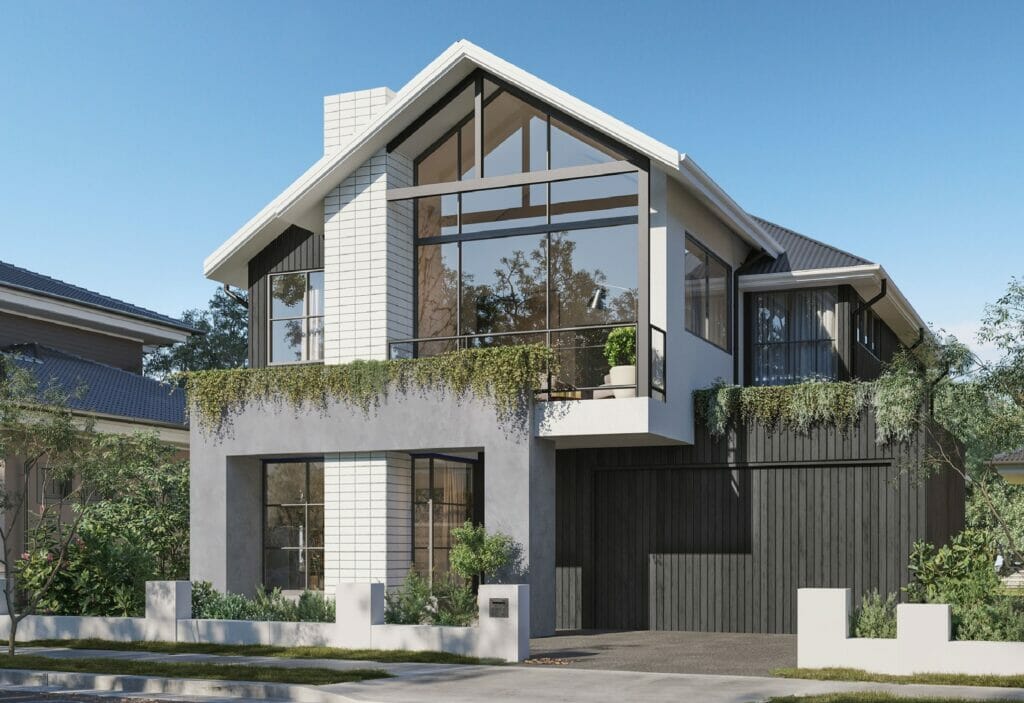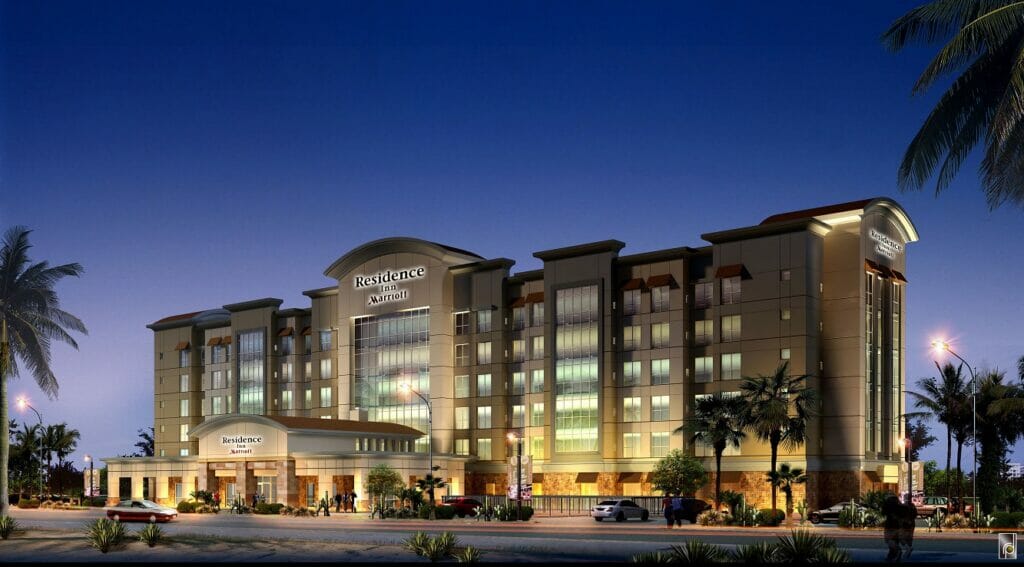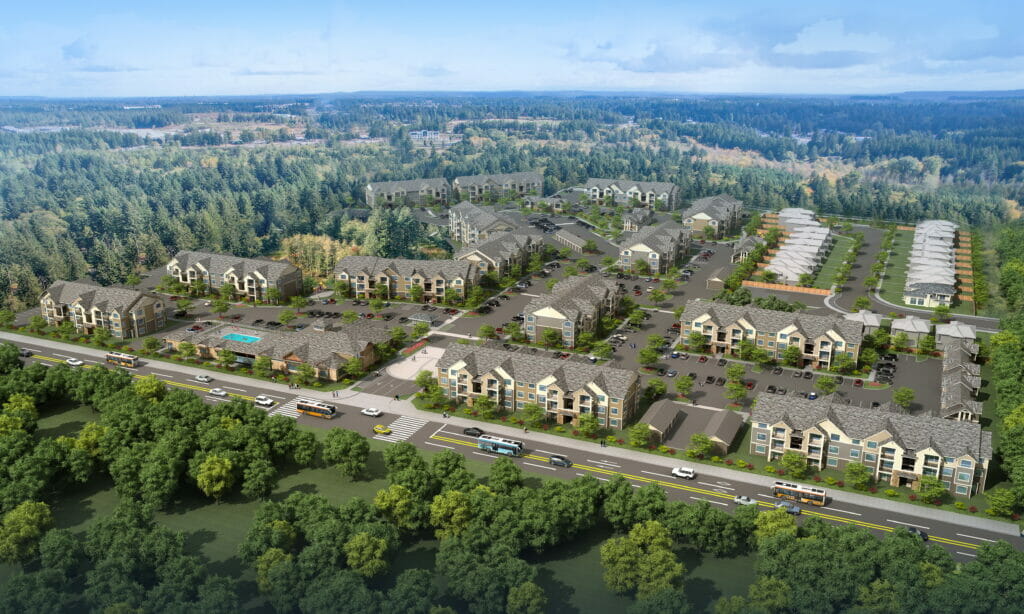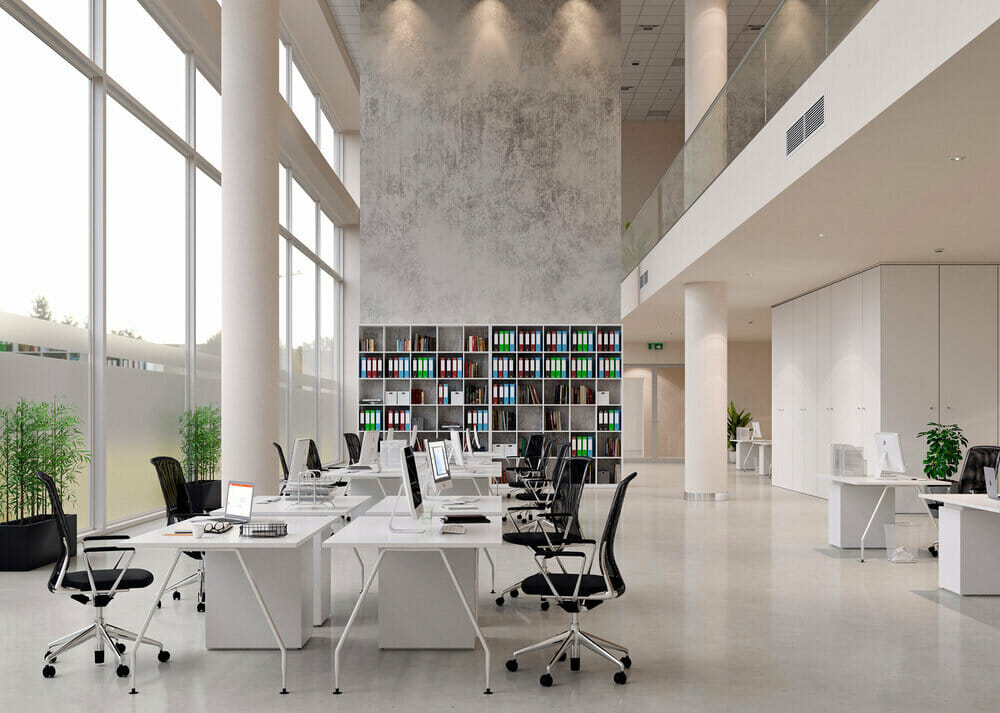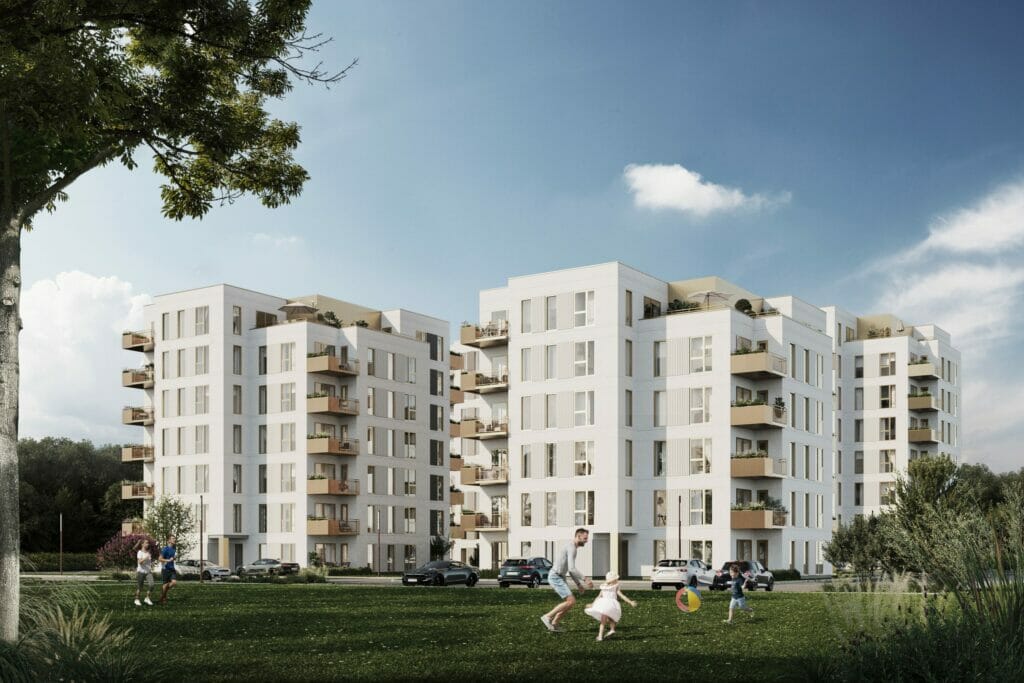3D Rendering Price Guide
ABOUT OUR 3D RENDERING PRICING GUIDE
3D Rendering pricing can be a very confusing space. Pricing can range from $99 to $3,000 per image. This guide aims to demystify the pricing of 3D rendering services. For more information on our pricing, pleae feel free to contact us directly.
3D RENDERING SERVICE TYPES
The single most significant factor when it comes to determining the cost of your 3D Rendering project is determining the type. There is a big difference between rendering a small home vs a High Rise Tower. If you are unfamiliar with the service types below, we suggest you visit our service pages for more information regarding your specific project. These pages help you understand the type of projects that fall into each category.
Rendering Pricing Table (estimates)
Exterior Residential Rendering
Interior Residential Rendering
3D Floorplans
Medium - Large Exterior Rendering
Aerial Rendering
Commercial Interior Space/ Amenity Area Rendering
Architectural Animation
THE TWO MAIN FACTORS THAT AFFECT 3D RENDERING PRICING
1.) 3D RENDERING JOBS
The main cost of a 3D rendering is the labor required. Three professionals are generally involved in a 3D rendering project
- Project Manager
- 3D Artist
- Post Processing / Photoshop Artist
By far, the most significant component of the labor cost is the 3D Artist so that we are focused primarily on the 3D Artist’s role.
WHAT DOES THE 3D ARTIST DO IN THE 3D RENDERING PROCESS?
To create a render, a 3D artist needs to:
1. Understand the plans and client’s vision.
2. Create the model using 3d software.
3. Texture the model.
4. Set up the lighting.
5. Set up the camera.
WHAT INCREASES THE 3D ARTISTS LABOR COSTS?
The labor involved in a 3D render is not as straightforward as one might think. Skilled 3D artists can create what can appear to be an extremely detailed scene in a short amount of time using the tools at their disposal. On the other hand, seemingly simple scenes might take much longer.
For example, one could create a large and very accurate aerial view of a forest very quickly using public topographical data and several automated processes. However, it could take several days or weeks to model a single piece of equipment, according to exacting standards, such as an electronic device with complex circuit boards and wiring.
In many cases, the process can be sped up using items from our libraries, such as furniture, cars, people, and finishes. The main factors that affect labor are the level of detail and the number of unique elements required.
POST PROCESSING ON 3D RENDERS LABOR COSTS.
Once a 3D render has computed, most studios employ a photoshop artist / graphic designer to touch up the image. Post-production can be a minor or major part of the process. Some studios render a fundamental scene and then do most of the detailing in photoshop. We take a more minimal approach to post-processing. A studio could do no post-processing, but almost always is there some color tweaking or touch-ups required.
2.) RENDERING TIME
Rendering time is the amount of time that it takes a computer to create your image. Rendering time is directly related to how realistic the image is, and how much detail you require. However, there are many tricks to create detail without adding much rendering time.
As a consumer, you should not worry too much about rendering time: that is the job of the rendering company! We provide the information below to help you understand why some projects cost more and take longer, than others.
WHAT INCREASES RENDERING TIME?
Depending on the rendering software, the number of light sources can sometimes significantly affect rendering times – thus, exterior scenes can render quite quickly. Another factor is the detail of the scene. The industry term for this is poly-count, which refers to the number of polygons used to model the scene. For more information, you can check out Wikipedia’s 3D modelling page here.
A common element that significantly increases detail, and therefore rendering time, is foreground vegetation, background vegetation should be optimized with a technique of using billboards or sprites click here to learn more. Additionally, curved surfaces tend to require much more detail.
REDUCING RENDERING TIMES
The biggest single thing you can do to reduce rendering time is to reduce the number of required revisions by giving detailed plans and specific feedback. Every time you require a revision, some or all of the image needs to be re-rendered, so fewer revisions results in less total rendering time. Reducing revisions may save you money in the long run – at RealSpace, we generally price lower for returning customers, who we know we can work with efficiently.
The other largest factor in rendering times is resolution. This comes into play much more when creating animations, however, it can still be a factor when creating still images.
HARDWARE AND SOFTWARE EFFECT ON RENDERING TIME
With the constant improvements in computer hardware and the changes in rendering software, rendering time for still images is becoming a minor factor in price. However, the rendering time for animations is still a very relevant factor in their production cost.
PRICING STRATEGIES - PER IMAGE OR PER PROJECT
1.) PER-IMAGE PRICING
With per-image pricing, you are charged a fixed price per rendered image or a scalable price depending on the number of renders you decide to purchase. This type of pricing works well for smaller projects.
For example, if you want a basic residential house exterior rendering the differences from one project to another is not significant.
For this reason, rendering companies may be able to charge a flat rate for all these styles of renders.
Scalable per image pricing – Often, the cost to render 1 image is slightly higher per image than if you choose to purchase multiple images. The reason for this is the initial setup for 1 rendering can be quite intensive. Once this set up is complete, the rendering process becomes much more manageable.
2.) PER-PROJECT / PER-SCENE PRICING
For this type of pricing, you generally send a company the details of your project, and they send you back a customized quote based on your needs.
This sort of pricing is more typical for larger-scale 3d rendering projects which include several different elements, including web design, animation, 3d floor plans and multiple rendered images.
When getting a quote for a large-scale project, you should look for a volume discount.
DIFFERENT 3D ARCHITECTURAL RENDERING PRICE POINTS – $99 TO $10,000 WHAT IS THE DIFFERENCE?
BOTTOM OF THE BARREL – CHEAPEST 3D RENDERING PRICING: $99-$200 PER IMAGE - BUYER BEWARE
With 3D rendering technology available globally, the cost associated with 3D rendering can fluctuate drastically. Many architectural rendering firms in less developed countries can produce cheap options to create 3D images by taking advantage of more relaxed regulations and cheap labor.
Often working with 3D firms overseas can pose some problems regarding language barriers, time zone issues, stylistic difference and in general, the final quality tends to be lower. That’s not to say there aren’t amazing 3D artists all over the world; however, many of these firms offering bottom of the barrel pricing focus on high quantity as opposed to high quality.
Having architectural images created by a company offering prices from $99-$200 per image should be reserved for when the project’s purpose is merely conceptualizing ideas and designs for a personal project. Many of our clients have previously tried their luck using the low-end pricing option only to realize ‘you get what you pay for’ and have ended up coming to us.
TIMES WHEN THE CHEAPEST PRICING IS BEST:
When the budget for the project is the only concern, final quality and personal time spent micro-managing the project isn’t an issue
THINGS TO WATCH OUT FOR:
- Look for misleading portfolios:
- Do the images look like realistic client projects or were they created to make a portfolio look good?
- Do they have 5 or 6 nice renders followed by many very poor renders?
- Are there only small images that can’t be expanded?
- Are the fine details there?
- Soffits
- Nice appliances
- Detailed windows
- Landscaping
- Trim
- Siding
- Nice interior design and detailed furnishings
- What are the possible hidden costs?
- Do they charge for higher resolution images?
- What do they charge for extra revisions?
- What is their hourly rate?
- How long have they been in business?
- Do they have a physical address?
- Do they have real reviews?
- Will this company respect your timelines?
- Does something feel ‘off’ or ‘too good to be true’?
BASIC 3D RENDERING PRICING: $300-$400
This price range is generally a step up from the bottom of the barrel pricing bracket as it typically represents a more professional experience. Most projects in this price range are outsourced but should be professionally project managed from someone more local or with exceptional language skills.
At RealSpace 3d this price range of projects are managed locally by experienced 3D artists who can make modifications to the 3D files or correct mistakes instantly in Photoshop. We utilize the services of some very talented contractors, with whom we have a long term relationship. Contractors allow us to keep the quality exceptionally high while offering competitive pricing.
One of the best applications for this type of rendering project is the basic exterior house render.
TIMES WHEN LOW-END PRICING IS BEST:
- When the budget for the project is the primary concern, final quality needs to be very good but doesn’t need to be in the top tier
- The general purpose of the project is to gain approval from regulatory bodies, basic style planning, real estate presale
- These services are excellent for architects, realtors, home builders, and real estate marketing agencies
- When you’re a homeowner looking to plan out your DIY renovation
THINGS TO WATCH OUT FOR:
- Do they have an extensive portfolio with projects that look like they are for real clients?
- How long have they been in business?
- Will language and design style be an issue?
- Do they offer any additional quality beyond the ‘bottom of the barrel’ pricing option or are they just priced higher
Quality example of 'Basic Pricing' Residential Renderings:
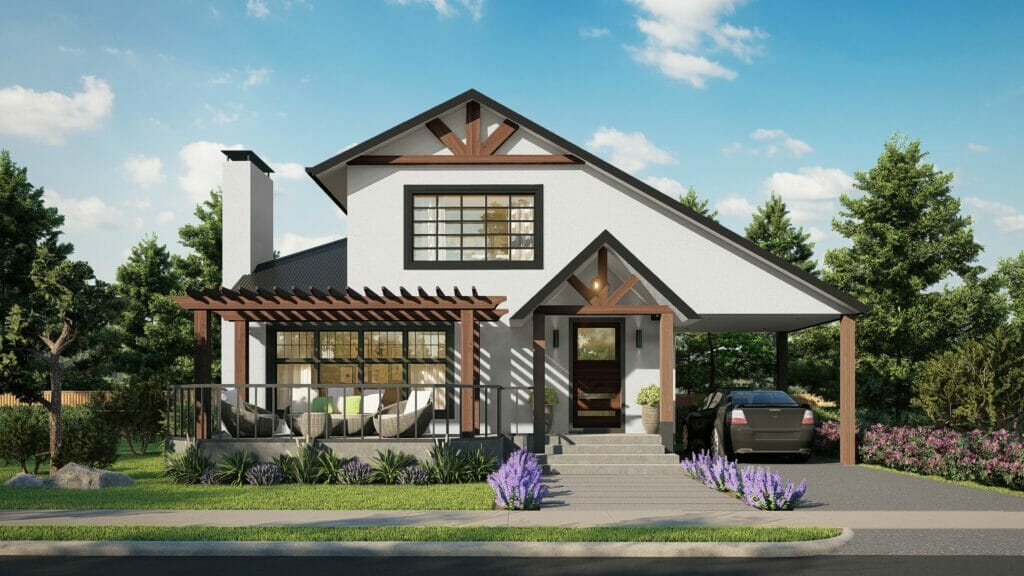
Residential House Rendering
MID LEVEL 3D RENDERING PRICING $400-$1200
Mid Level pricing is the most common option for developers, architects, real estate agents, and designers working on high-end homes and medium to larger-scale rendering projects – such as townhouse renders. This level of quality and price is RealSpace3D’s bread and butter. We focus on creating great images without blowing your entire marketing budget.
For the average customer, it can be challenging to differentiate between an “alright” render and a “great” render without having a direct comparison. The best way to judge render quality is to look on a real estate website and take a look at how your direct competitor’s renderings look side by side with the company you’re considering. At the very least you should be able to say that the company you’re considering’s images are on par if not better.
TIMES WHEN MID LEVEL PRICING IS BEST:
- When you need your project to stand out among the rest
- For professionals:
- Architects
- Developers
- Real Estate Agents
- Marketers
- Designers
- The purpose of the render is for sales, design planning, regulatory approval or conceptualization
- A few hundred dollars is not a lot in the big picture:
- Could more impressive imagery help you sell faster?
- Could it convince a client or regulatory board to go ahead?
THINGS TO WATCH OUT FOR:
- Can the company justify its higher price point over a lower end render?
- Do they seem knowledgeable and professional?
- Will the company provide images similar to what they advertise?
- How long have they been in business?
- Do they have testimonials and or reviews
- Do they meet or exceed your competition’s rendering quality?
- What is their turnaround time?
- Are they local, are they available to talk over the phone to explain their services?
Quality example of 'Mid Level Pricing' Renderings
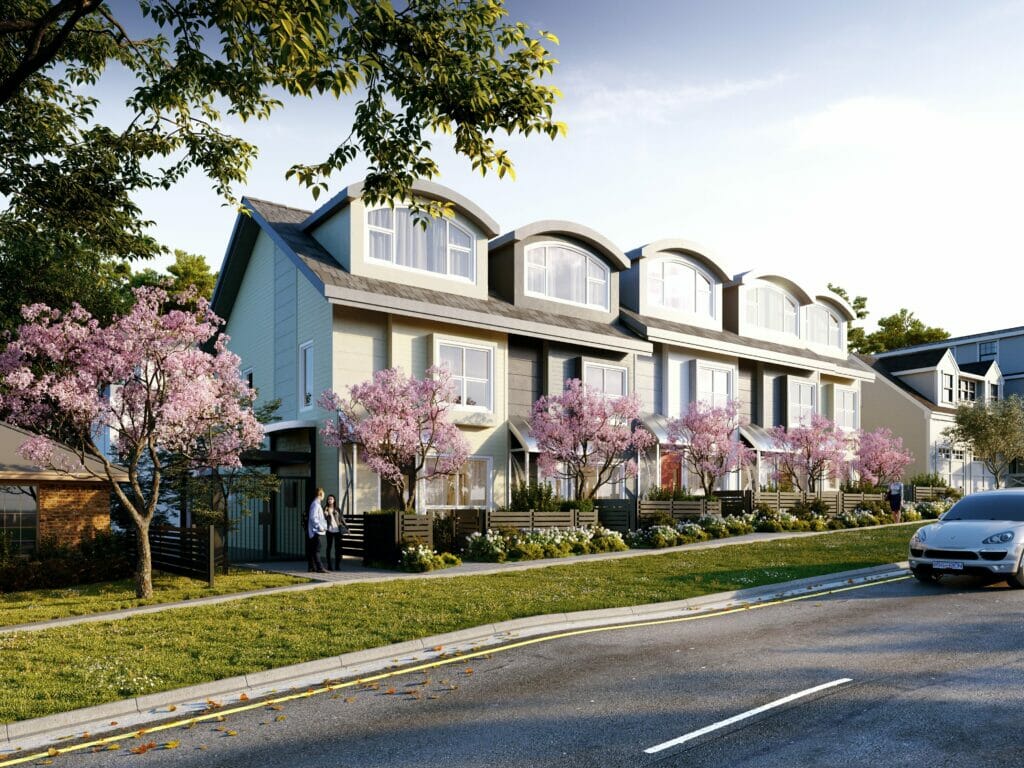
HIGH-END 3D RENDERING PRICING – MOST EXPENSIVE: $2000-$10,000+
High-End 3D rendering pricing customer is usually large established corporations where value is essential, but the top tier quality takes priority. These renders are not for your everyday client as most budgets do not allow for the more exuberant pricing. However, when you’re planning on marketing a new highrise development or super mall, branding and perception is massive. Tens of thousands of dollars on a 100 million dollar project is just a drop in the bucket, especially when these images could be responsible for hundreds of presales or they could be the difference between approval and rejection.
One of the standard benchmarks used when describing how a client would like their marketing images to look is “I want this rendering to look like the Apple of (insert their niche)” However, what is often not mentioned when referring to Apple’s marketing is the team of experts and countless revisions it took to get to that level, not to mention the high price tag. However, the money invested in high-quality branding seems to have worked out quite well for companies like Apple.
TIMES WHEN HIGH-END PRICING IS BEST:
- You are a top professional and want to work with top professionals.
- Spending tens of thousands is not going to break the budget.
- The purpose of the render is for sales, design planning, regulatory approval or conceptualization but on a grand scale
- If you’re an architect, developer, real estate agent, or designer but your project needs to turn heads and be the best by a wide margin
- When you’re willing to pay to work with the best companies in the industry
THINGS TO WATCH OUT FOR:
- Can the company reasonably argue that they are one of the best architectural rendering companies in your city, country, or the world?
- Have they worked on large landmark projects?
- Can you see a jump in quality and service that justifies the price?
- Have they worked with some of the top brands in the industry before?
- Do they offer any guarantees associated with their render quality or turnaround time?
- Who are the rendering company’s clients?
- Top local and international companies?
- Do they have testimonials or reviews?
- Are they willing to connect you with one or more past clients as a reference?
